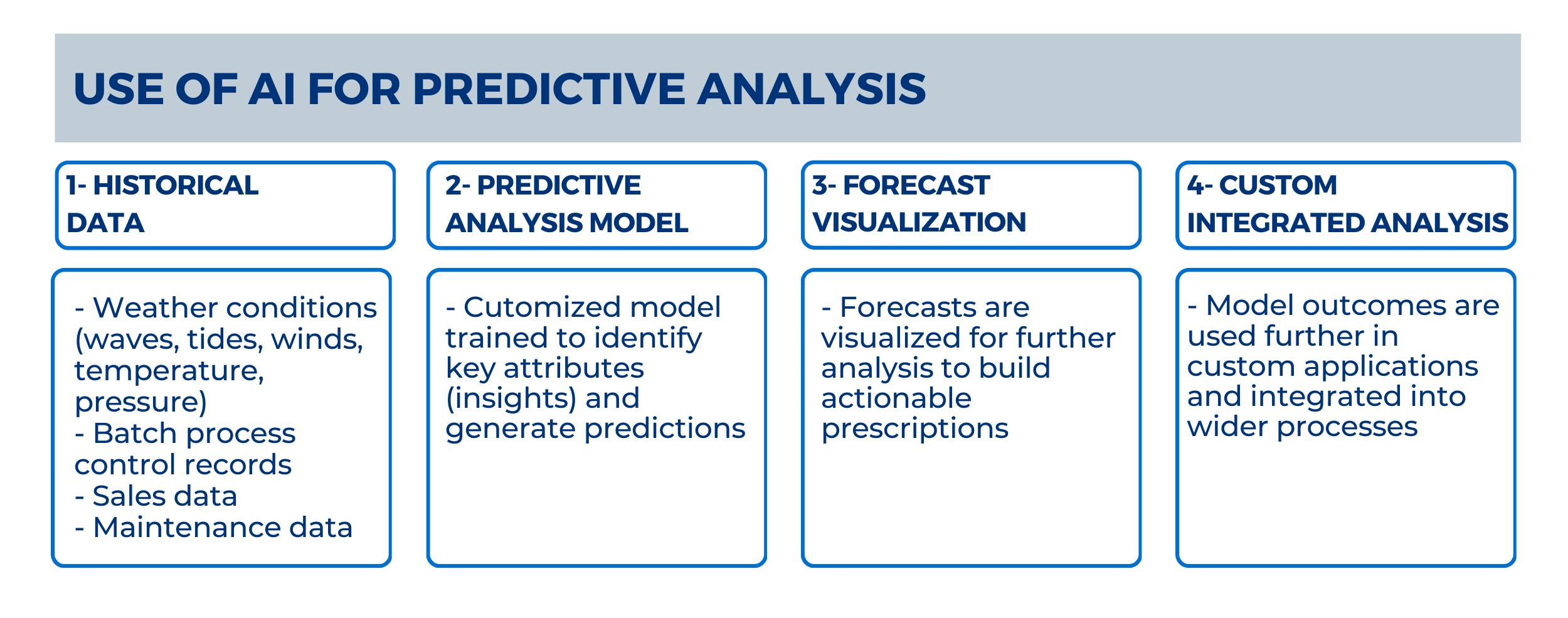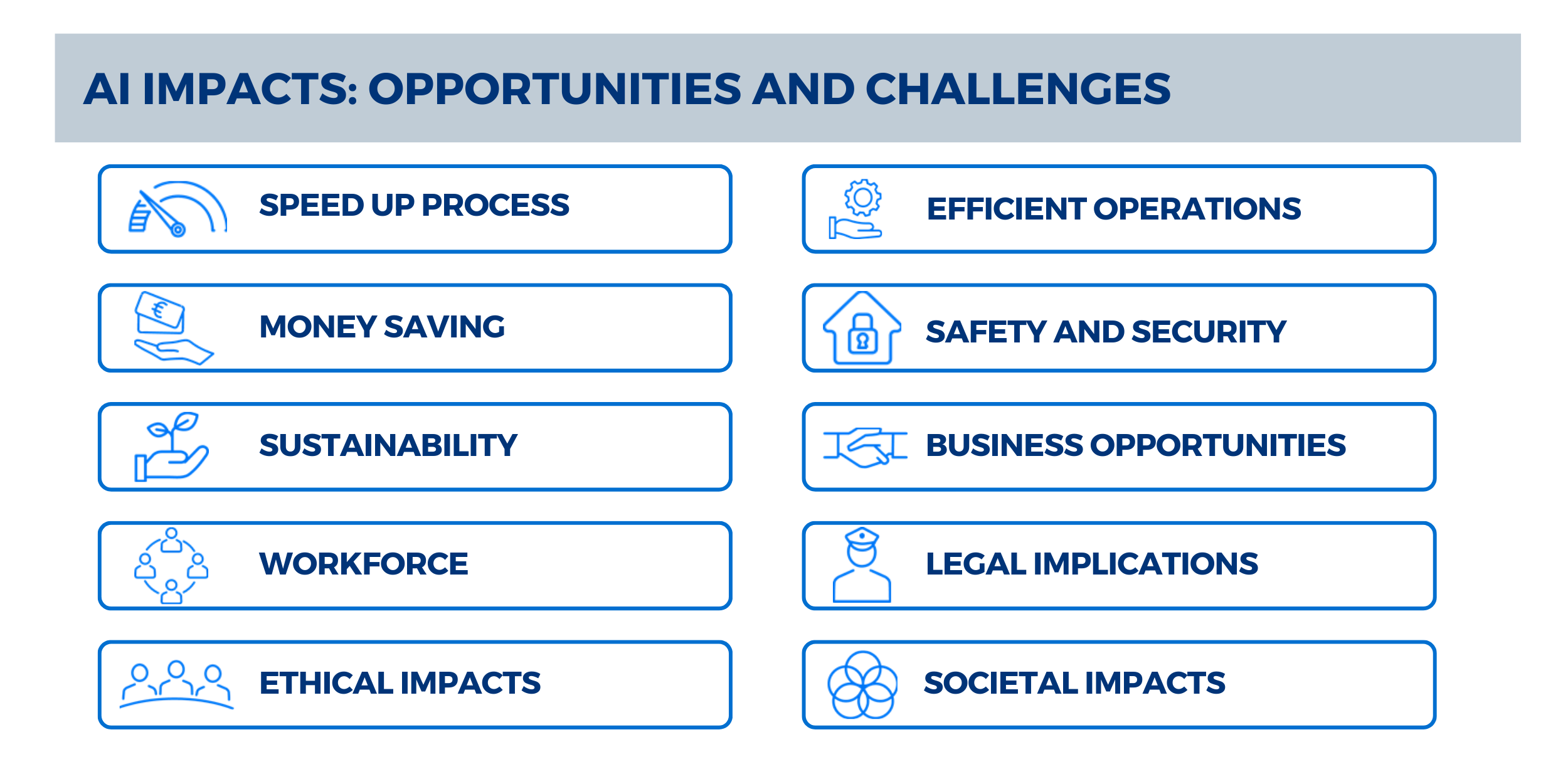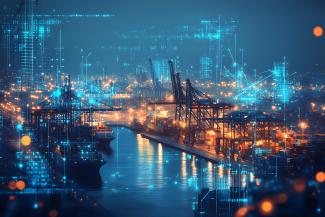Most recent advancements in technology have made possible the digitization and automation of several processes and operations within the maritime sector, leading to the emergence of several innovative solutions, enabling more efficient and accurate operations, increasing safety, saving money, and contributing to a more sustainable environment.
Among all digital technologies developed and implemented in the sector in recent years -such as 5G networks, Internet of Things (IoT), immersive reality, and blockchains- the use of Artificial Intelligence (AI) has rapidly gained traction due to the numerous advantages that it offers. This new technology based on machine learning algorithms is constantly improving and becoming more widely adopted. Nevertheless, this vertiginous development of AI comes with several challenges and concerns that need to be addressed.
The deployment of AI in the maritime sector has witnessed a steady rise in recent years, and it still has great potential. Throughout this article, we will explore the most recent applications of AI in the sector as well as its implications, benefits, and challenges.
The role of AI in transforming maritime trade
Maritime transport is the backbone of international trade and the global economy: over 80% of the volume of international trade in goods is carried by sea, according to the Review of Maritime Transport 2021 (UNCTAD). The dynamics of maritime transport have great complexity due to the multiple factors and stakeholders involved. That is why a small improvement in one of the links in the supply chain can have a great impact on worldwide maritime trade. Hence, the use of AI has rapidly increased in the sector.
AI can be used in a huge array of technological applications within the sector, such as the evaluation and optimization of several processes, forecasting, and allowing the autonomy (or partial autonomy) of automated units.
The implementation of AI can be seen in different operations and stages of the logistic chain. Some implementations include real-time analytics, improved scheduling, automated processes, and more. The most widespread uses regarding this aspect include:
- Optimization of shipping routes and schedules for container ships, based on the analysis of real-time data that allows the dynamic schedule and re-schedule of arrivals to avoid delays.
- Cargo loading optimization for containers, optimizing the container positioning to make the best use of the available space.
- Predictive maintenance of ships and port equipment that can prevent equipment breakdowns and reduce downtime.
- Autonomous ships, and port equipment, that reduce the hiring and human errors, incrementing the safety and efficiency of the shipments.
- Energy management to optimize fuel consumption and reduce CO2 emission.
- Supply chain management, that improves cargo tracking, reduces losses, and boosts shipping efficiency.
- Dynamic pricing of shipments, through dynamic pricing algorithms that can estimate the revenue-optimal price considering the fluctuating market tendencies.

Balancing opportunities and challenges
The benefits of implementing AI in the maritime sector are numerous and very clear: operations can be more transparent, predictable, and efficient than ever. Among the main advantages of AI implementation, the most relevant are: more efficient operations and money saving; reduce hiring and human errors; increase in security and safety; increase sustainability, creating a more sustainable industry in the future, and development of new business opportunities.
Nonetheless, the incorporation of AI also introduces a multitude of challenges and concerns that should not be overlooked, especially from ethical and societal points of view.

One of the most concerning aspects is related to the impacts on the workforce and job displacement, since certain tasks and roles may be automated. The Port of Rotterdam, the first port in the world to introduce automation in 1993, has experienced the challenges of worker concern about automation: in January 2016, the Port of Rotterdam saw its first strike in 13 years caused by disagreements between workers and terminals over the expected loss of hundreds of jobs to automation. After 18 months of negotiation, dockers at the Port of Rotterdam reached an agreement that ensured job security until July 2020 (ITF, 2016). It is clear that automation leads to the elimination of certain jobs, nevertheless, operators contend that job losses can be offset by reskilling and upskilling current workers to run automated systems, leading to increased pay and improved safety.
For example, in the USA, where the automation process has slowed down due to unions’ resistance, the Pacific Maritime Association (PMA) is building a 20,000-square-foot training center for the International Longshore and Warehouse Union (ILWU) workers. Likewise, a few years ago PMA and ILWU agreed on the implementation of automation in exchange for a nearly $ 900 million addition to its pension fund and other retirement benefits (CNBC, 2022). In conclusion, ensuring a smooth transition to AI is essential, providing training and re-skilling opportunities for the workforce.
Another key aspect to be considered is the legal implications since the rapid advancement of AI technology often outpaces regulatory frameworks, so establishing AI laws and regulations to protect rights and ensure accountability is an ongoing challenge. One example is the development of AI-powered autonomous ships (Kongsberg, 2020) that, in the absence of a human crew, the responsibility in the case of a potential accident is still not clearly regulated. It is crucial for appropriate regulations and standards to be established to guarantee secure and ethical operation.
There are other aspects such as ethical impacts and considerations that should also be addressed: it is crucial to ensure that AI systems are built and deployed in a way that respects individual privacy rights and maintains transparency and accountability. Moreover, the long-term societal impact of AI is still not fully understood. Unintended consequences, such as reinforcing biases, amplifying inequality, or creating new ethical dilemmas, need to be carefully considered and proactively addressed.
Continuous adaptation
The revolutionary impacts of AI in maritime operations have brought numerous benefits, namely increased efficiency, cost savings, enhanced safety, and sustainability. However, the implementation of AI also introduces challenges and concerns that need to be addressed. Balancing the advantages of AI, such as efficient operations and new business opportunities, with potential job displacement, legal implications, and ethical considerations remains an ongoing challenge. By navigating these complexities, the maritime sector can leverage the transformative potential of AI while ensuring responsible and ethical practices in its implementation.

































